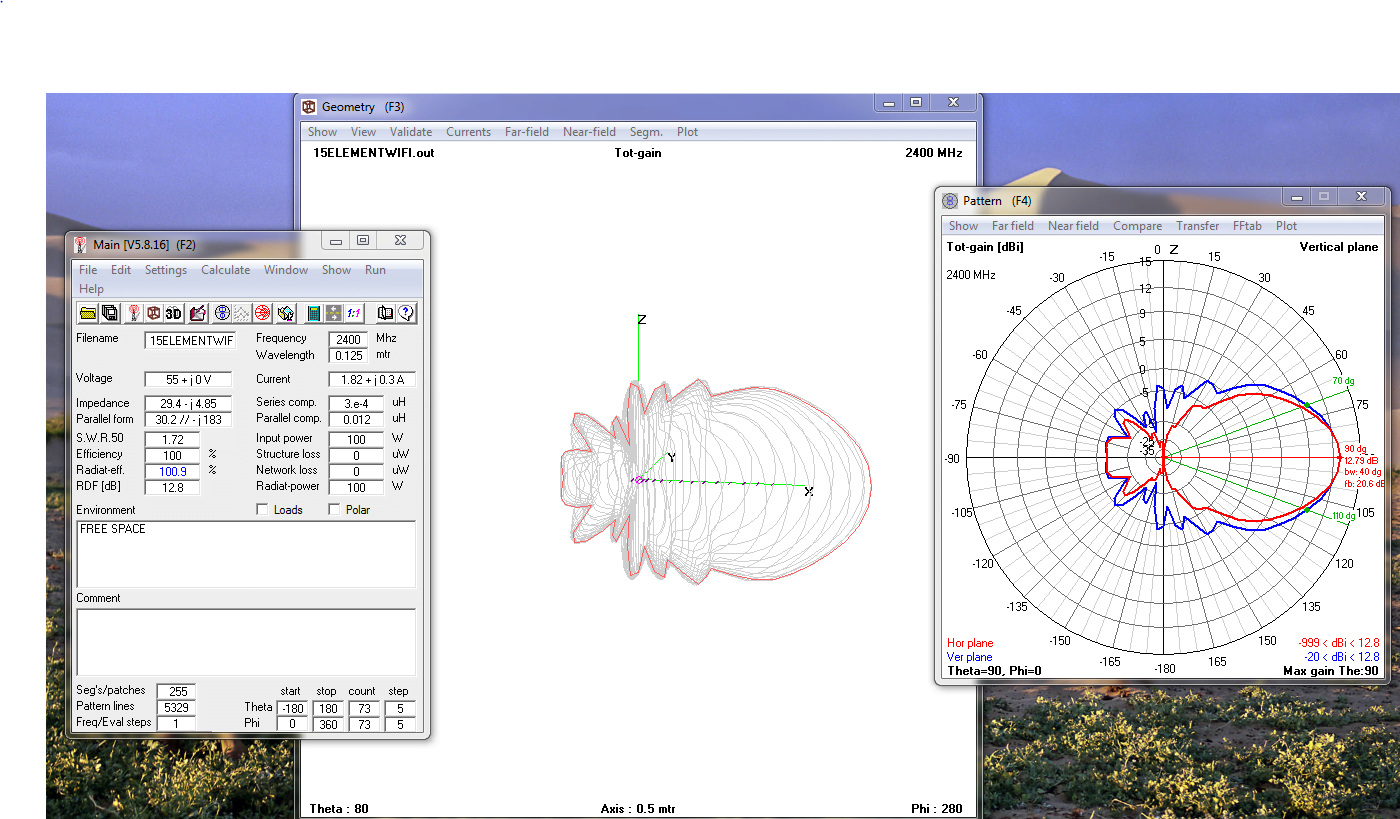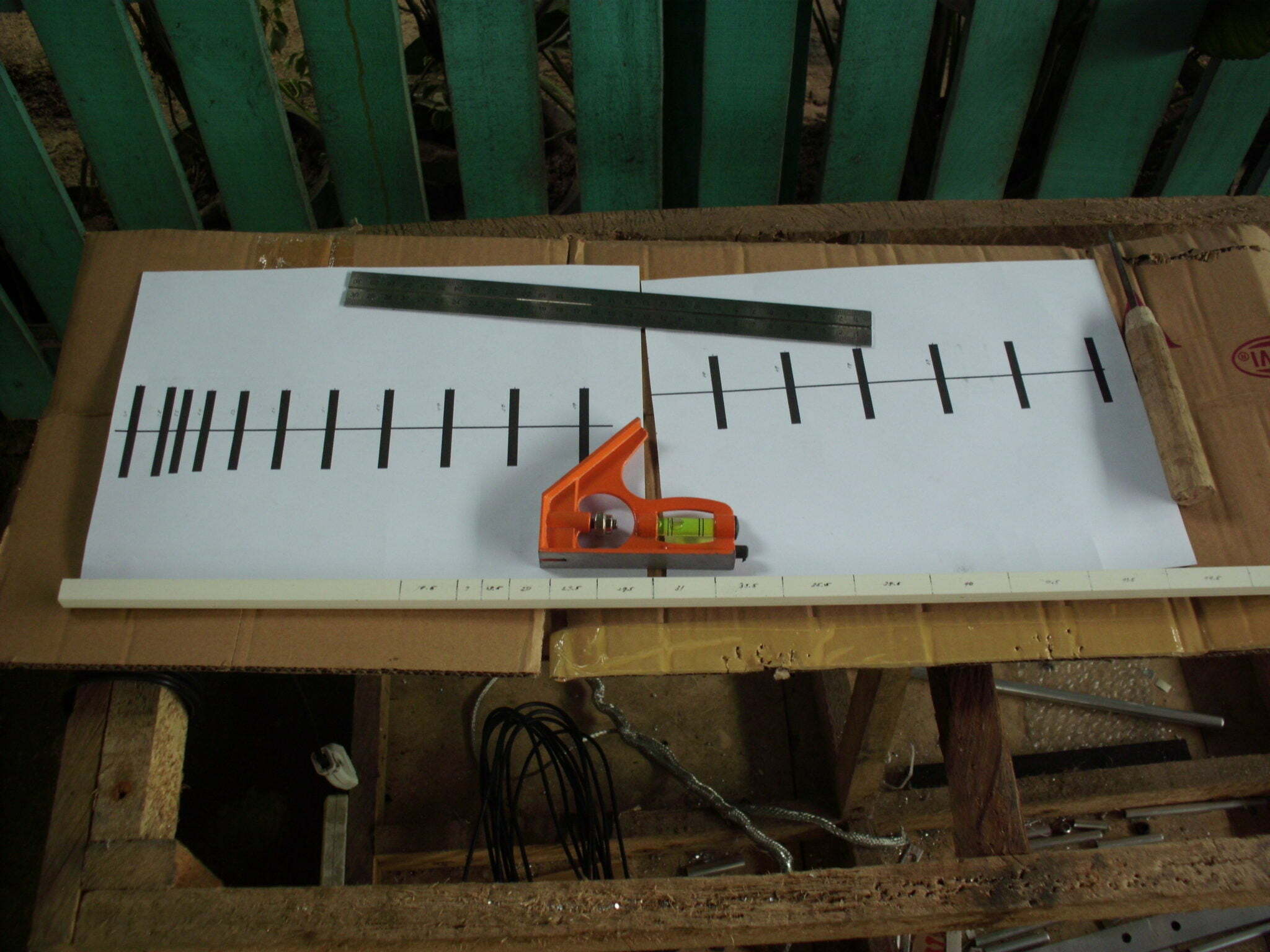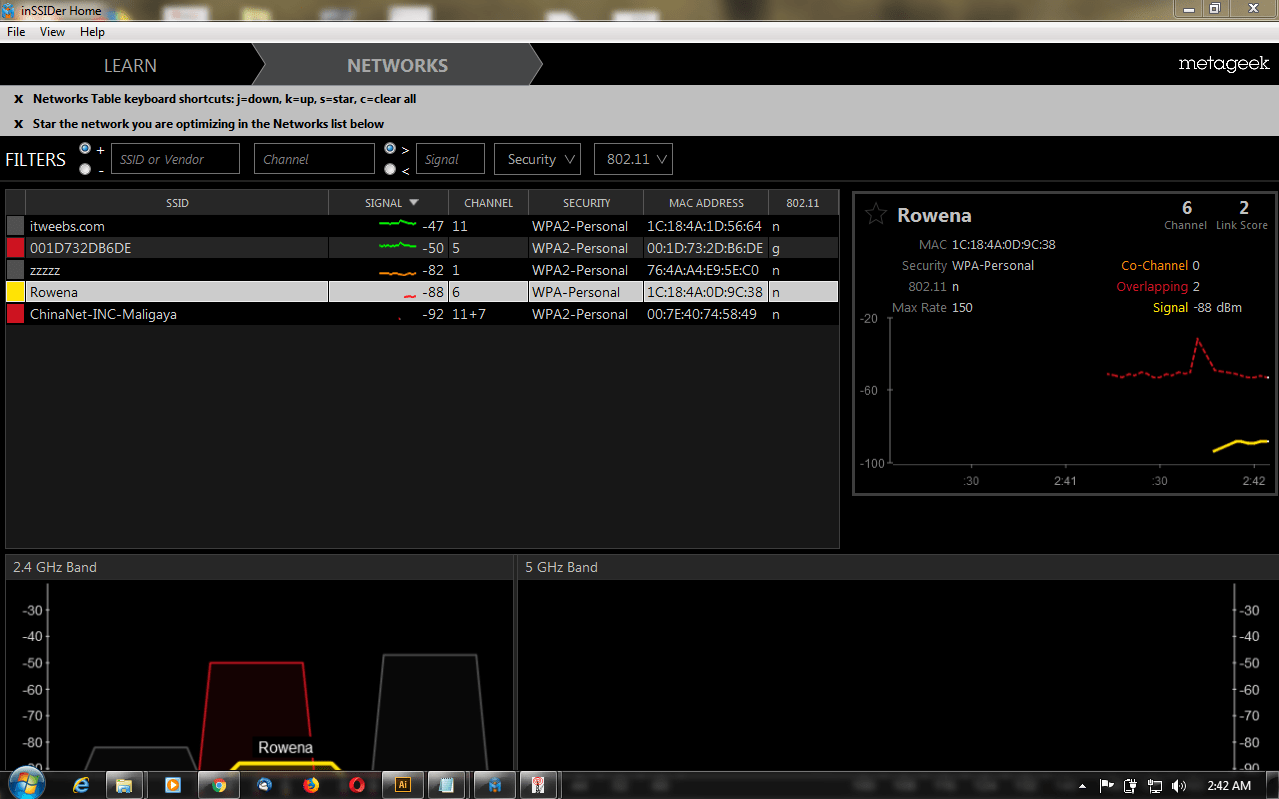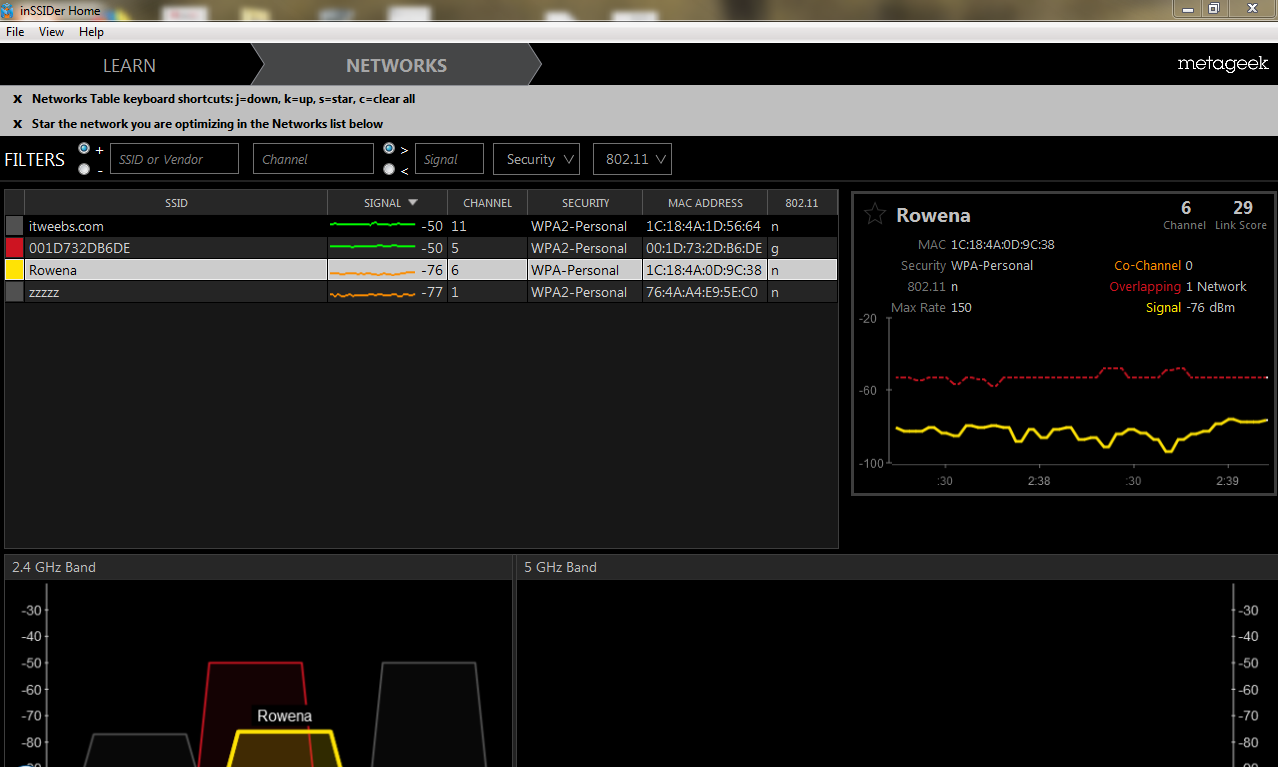Building a 15 Element Yagi for 2.4Ghz Wifi frequency. This antenna build is very useful for extending your wifi range indoor or outdoor. The approximate gain of this 15 element yagi is approximately 13dBi with a good front to back ratio of 20.6dB. Beamwith is 40° horizontal and 70° vertical.
Materials Lists
1. 12mm x 8mm uPvc moulding (Boom)
2. #12AWg solid wire for elements
3. Measuring tool / precision cutter
4. 1 SMA female connector
5. Coaxial cable suitable for SMA connector
6. Sandpaper or file tool for removing rough edges of the elements


Antenna Dimensions:
Download the PDF Document here
Antenna Gain/Patterns:
Gain and and antenna patterns are from 4NEC2 antenna modelling software.

Combined


Horizontal:

Vertical:
Laying out:

Folded Dipole:


Some direct measurements from neighbors WiFi access point:

This first screen shot reading is from a WiFi card with a 5dBi dipole antenna

The second screen shot is taken from 15 Element Yagi antenna build taken indoors
As we can see from the above screen shots the initial measurement from a dipole yields -88dBm our reading from the yagi -76dBm direct calculation from the 2 values ( -88dBm – -76dBm = -12dBm) our yagi gain is almost equal to the theoretical gain of 13dBi. The above measurements are taken indoors the WiFi card is connected to a laptop.

4 replies on “Build a 15 Element Yagi antenna for 2.4Ghz WiFi”
Merhaba.
Anten planları için teşekkürler.
TA7OSK 73′
thanks and welcome 73
What is the max frequency range? Would it be better to target 2450mhz which is midway for all wifi channels?
@speedy here’s the frequency analysis for the wifi antenna using antenna analyzer https://youtu.be/ye6xbLky6As from 2.37Ghz to 2.46Ghz with exact center of 2.42Ghz, for long yagis it’is difficult to obtain a wide frequency response antenna since this is optimized for gain and not bandwidth. If you want to optimized for bandwidth then a log periodic antenna is a much better option. I design it that way because I need to connect two existing location without a privilege for putting up a long run of LAN cable because it crosses a highway this is the actual signal measurements I get from the antenna https://youtu.be/VTcXnH2X0qM